I am currently building Tamiya's 1/48 Tiger I Afrika Corps and I bought the Aber photoetch detail set for it. This is my first time trying to use one of these sets and I am finding it almost impossible to fold and glue this things together. I can barely see some of them. I am using Mission Model's Etch Mate for folding and a pair of nose pliers, but still, very hard. I haven't folded the first part successfully.
 The worst is trying to glue the parts, the CA won't hold them strong enough and they fall pretty easily.
The worst is trying to glue the parts, the CA won't hold them strong enough and they fall pretty easily.I was wondering if anyone had any tips about handling and folding photoetch.
Thanks in advance.




























